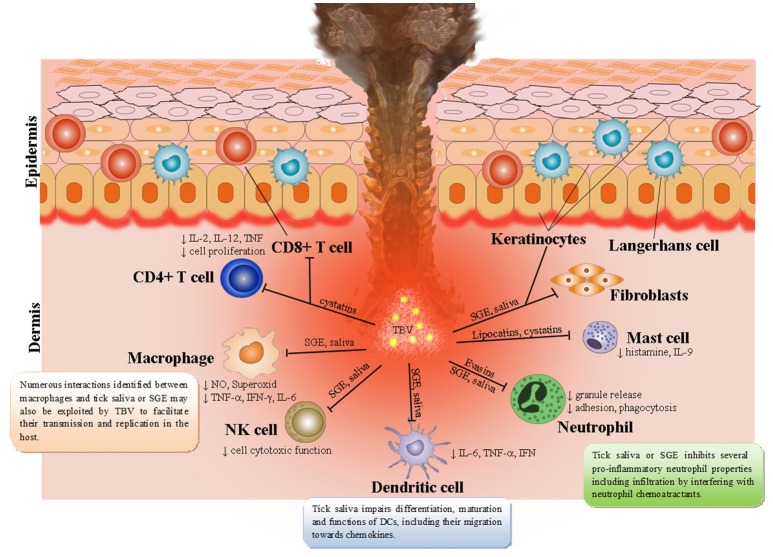Figure 1.
Tick saliva contains a broad spectrum of pharmacologically-active molecules affecting various immune cell populations. Skin is the key interface for tick-virus-host interactions. Resident skin cells—keratinocytes, Langerhans cells (epidermal dendritic cells), dendritic cells, T cells, macrophages, fibroblasts, and endothelial cells are immediately activated after first contact with tick saliva, hypostome, and TBVs. By producing and releasing a wide range of pro-inflammatory chemokines and cytokines they recruit other immune cells, such as neutrophils, T cells, and B cells into the tick attachment site. Tick saliva modulates immune responses to facilitate feeding and consequently facilitate transmission of TBVs, which target and replicate in different skin cells including keratinocytes, dermal macrophages, Langerhans' DCs, and neutrophils.

